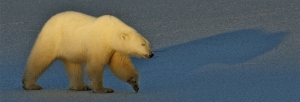The behavioral habits of wild animals have been traditionally studied through long periods of observation. These were hard processes and the results were not always optimal because the mere presence of humans always distorts results to some degree. Technology has vastly improved these processes; first with video cameras to record habitats in order to study them. Secondly, M2M devices to monitor animals’ activity have been deployed.
A collar or a bracelet placed on the animals are some of the M2M methods that scientists use to know their location at any time. They are also able to be aware of the weather conditions that the animals are subject to. This allows them to know more accurately about their way of life.
Those devices can also be useful to control animal populations, especially those of endangered species.
M2M has many benefits. For instance, the advancements in sensors could allow for the incorporation of dozens of features which can protect animals such as gunshot sensors to fight against poaching.
However, this technology has yet to overcome some challenges. Human settlements are scarcely found in areas in which wild animals live. This means that there is little or no mobile coverage which is why we depend on satellite monitoring. Also, the battery life of devices is another hindrance. Animals certainly aren’t going to spare the time to charge the batteries which is why it is necessary that these devices be autonomous during several months to fulfill their purpose.
The use of M2M in aid of animals doesn’t only entail placing devices on the animals themselves, but also solutions which monitor their environment. For example, the MolluSCAN Eye Project tracks pollution levels by monitoring sea animals and providing researchers with valuable data.

没有评论:
发表评论